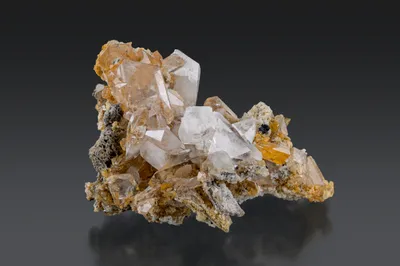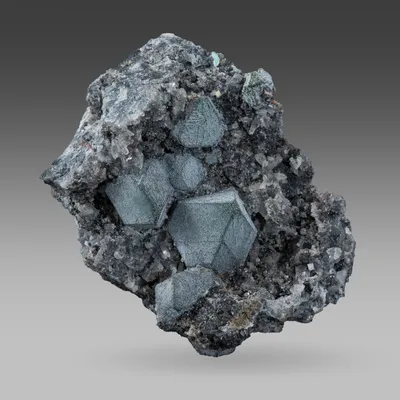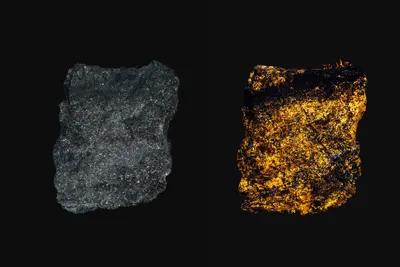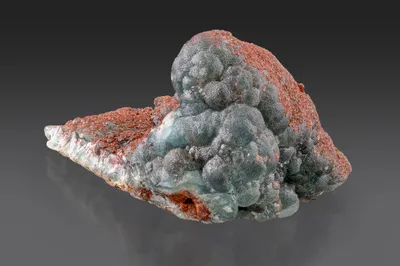Mineral Species
Queitite
Type Locality
Yes
Composition
Pb4Zn2(SO4)(SiO4)(Si2O7)
Crystal System
Monoclinic
Status at Tsumeb
Confirmed (type locality)
Abundance
Extremely rare
Distribution
Second oxidation zone
Paragenesis
Supergene
Entry Number
Species; TSNB296
Type Mineralogy
Queitite (IMA 1978-029) was first observed as colourless to pale yellow crystals in corroded massive sulphide ore comprising mainly galena, sphalerite and tennantite (Keller et al. 1979a). The location in the mine from which the type specimen was recovered was not reported in the original description. Queitite, however, is part of the rare lead silicate paragenesis (Keller and Bartelke 1982) which points unequivocally to a second oxidation zone origin and there is circumstantial evidence that the type specimen may have originated from 31 Level, East 9; a specimen in the Feinglos Collection (MGMH 2022.4.8942T) is accompanied by a handwritten Keller label that reads: "Tsumeb. 31 Lev. East 9 Stope. Queitite (Type)".
Queitite is named for South African mineral dealer Clive S. Queit, to whom Gebhard (1999) credited the discovery of this mineral. Keller et al. (1979a), however, indicated that the name recognises Queit’s broader support for mineralogical research through his provision of specimens of rare minerals to the academic community. The structure of queitite was later revised by Hess and Keller (1980). Type material is conserved at the Institut für Mineralogie und Kristallchemie, Universität Stuttgart, Germany (catalogue numbers TM-78-29-8903.25-Td and IMKU NM-03) and at the Smithsonian Institution in Washington D.C. (catalogue numbers 143780 and 147463).
General Notes
On the type specimen, queitite occurs on corroded galena/tennantite/sphalerite ore, with (in approximate order of decreasing abundance) willemite, melanotekite, leadhillite, alamosite, larsenite, and quartz (Keller et al. 1979a). It presents as sub-adamantine pale-yellow to colourless, elongate, sword-like crystals (to 10 x 3 x 0.5 mm). Queitite is potentially confused with pale yellow adamite crystals of similar habit (Keller and Bartelke 1982).
Gebhard (1999) recorded crystals of queitite to 20 mm in length, an observation confirmed by a specimen in the collection of Uli Bahmann (Johannesburg), obtained from Queit in the late 1970s.
Keller and Bartelke (1982) propose two distinct paragenetic sequences for the rare lead silicates at Tsumeb. The first of these ("R/1") is characterised by the early formation of alamosite while, for the second ("R/2"), queitite is the first-formed lead silicate:
R/2: primary sulphides >> quartz >> willemite >> queitite >> melanotekite >> "mineral T1" >> willemite >> larsenite
Examples of queitite in this paragenesis were collected from the East 9 pillar on 31 Level (Keller and Dunn 1986).
Associated Minerals
alamosite; anglesite; fleischerite; galena; kegelite; larsenite; leadhillite; mathewrogersite; melanotekite; mimetite; plumbotsumite; quartz; sphalerite; surite (?); tennantite-(Zn); willemite; wulfenite







